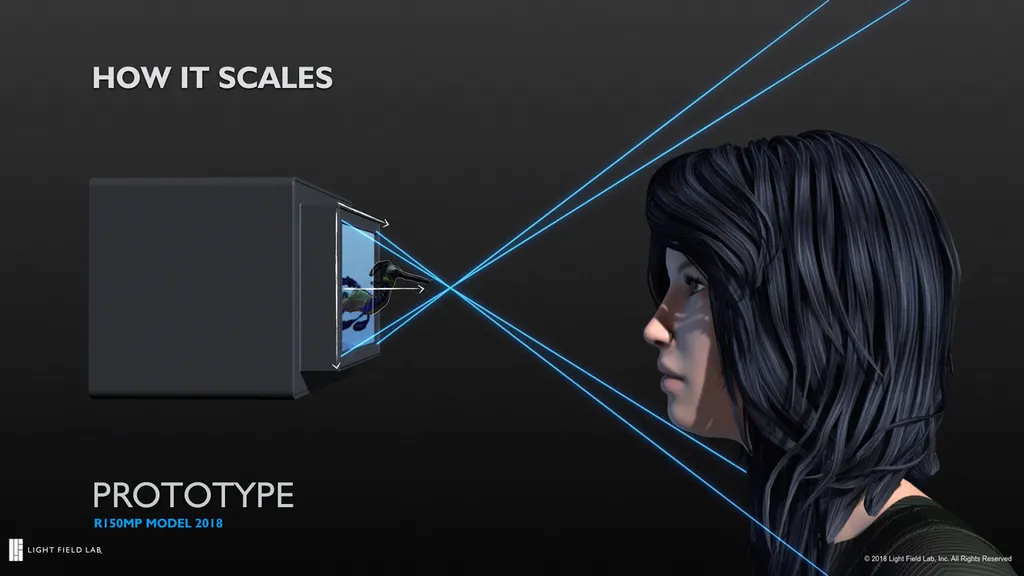There’s a monarch butterfly in the dark, suspended behind the glass panel of a decorative wooden lantern about a meter away from me. I am not wearing glasses. Light Field Lab representatives say they aren’t tracking my head’s position.
Like a practiced magician, Light Field Lab CEO Jon Karafin removes the lantern from its perch to reveal the butterfly is floating in the open air.
“This is a complete reconstruction of the light field such that your eye focuses on the holographic object from within the holographic viewing volume,” Karafin said.
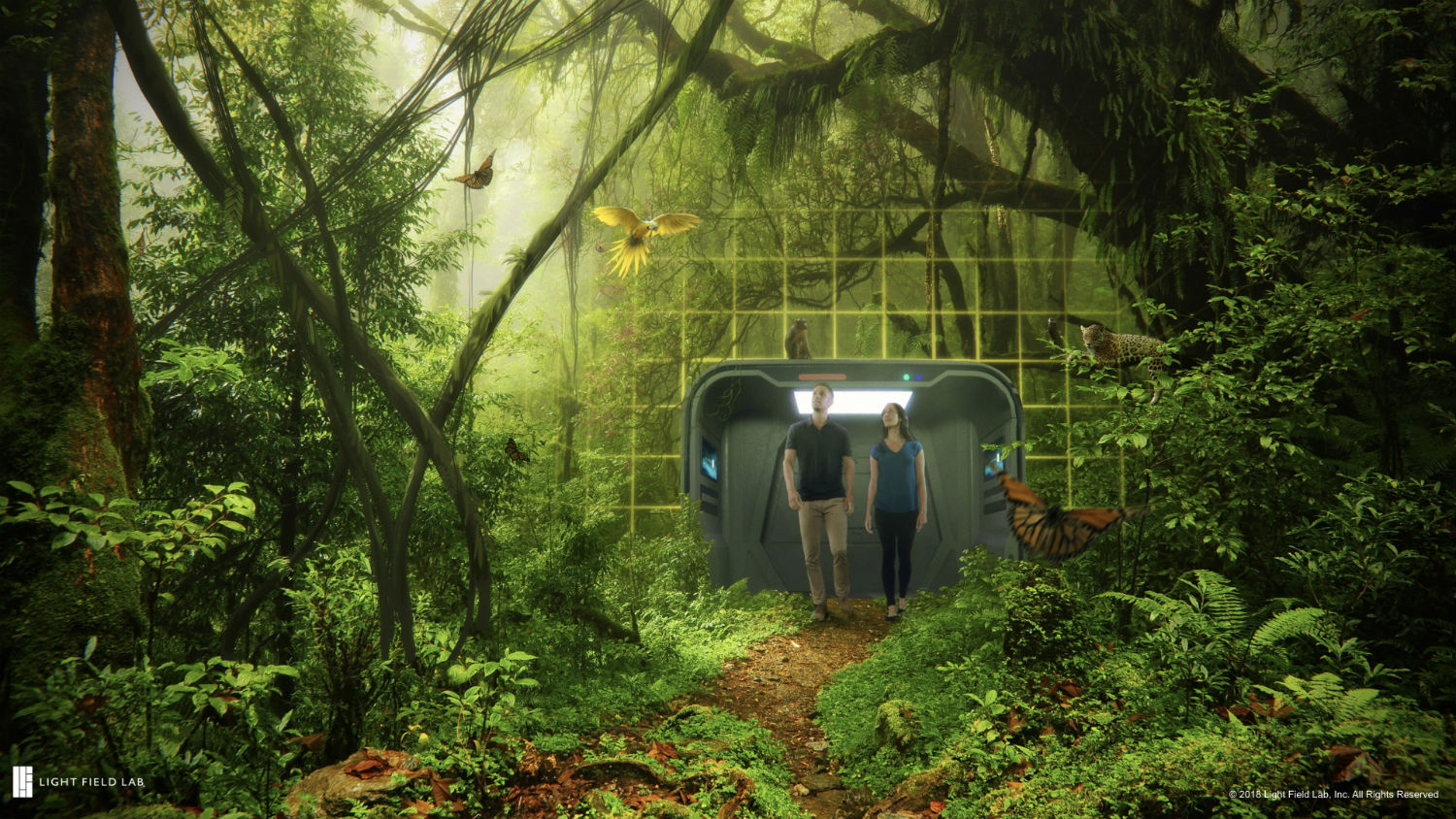
I move my head to the left and right inside the small “visual acuity” area outlined with glowing tape on the floor. This is the sweet spot. I also move my head both up and down in this area about a foot. The butterfly’s wings seem to respond with the correct parallax as I shift. I move slightly closer and backward and the butterfly seems to grow and shrink exactly as I would expect. This is what they said they would show me. The eight hours I needed to spend in a car driving to and from this demo in San Jose were not a waste of time.
“There are other volumetric display technologies that may leverage a surface to form 2D-only pixels in space (e.g. smoke, water, screens, mirrors, moving surfaces, etc.),” Karafin said. “However, these are not holograms.”
Real Holograms
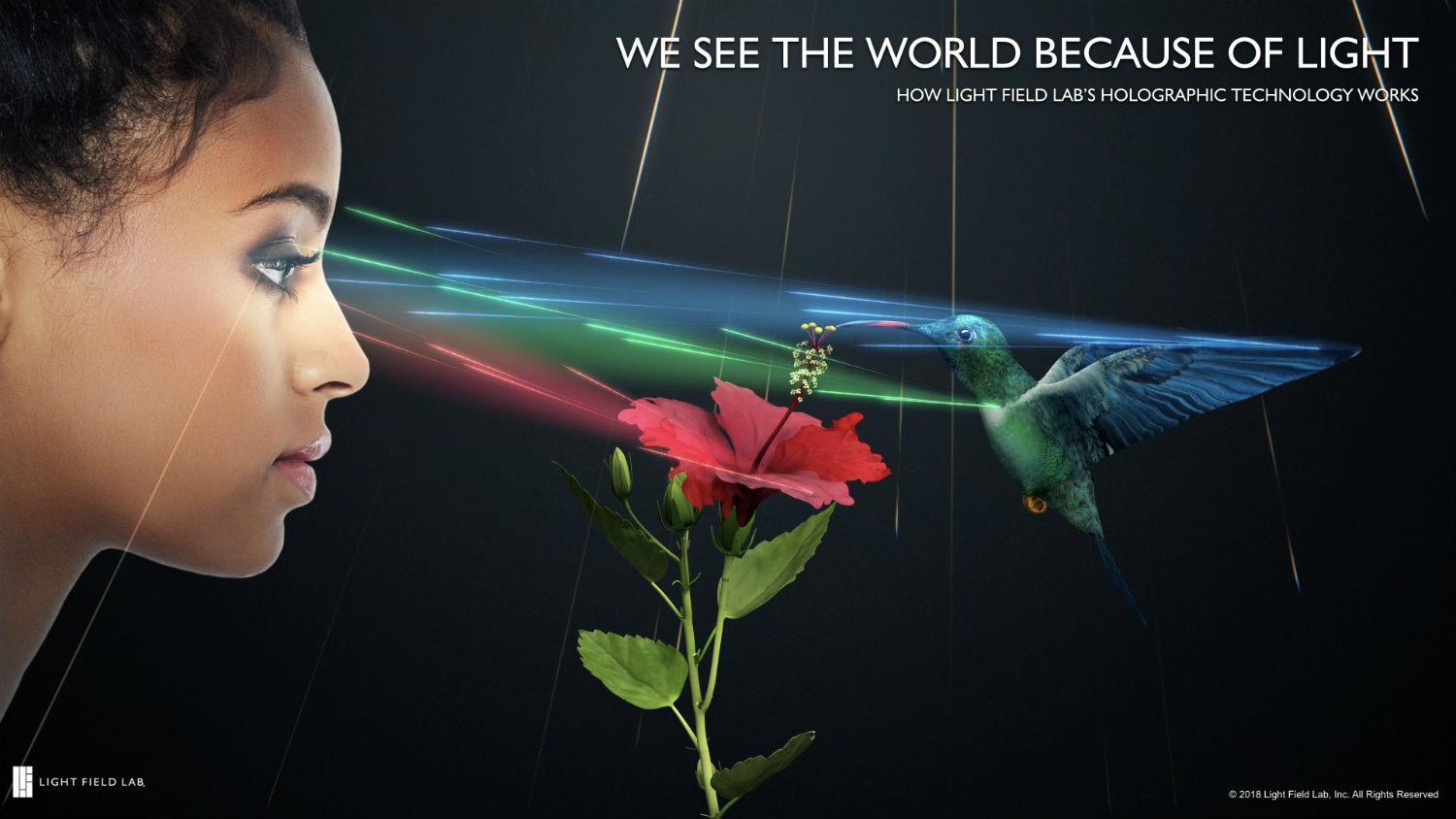
Karafin really baked my noodle next.
He grabbed a magnifying lens off a tray and placed it inside the butterfly. How does a standard magnifying glass warp light from the inside of a holographic object? My eyes and brain had never had to process the way light was behaving relative to the lenses he was putting “through” what my brain perceived as a physical solid object.
“When using the magnifying glass in front of the butterfly, it responds exactly as it would in the real world,” Karafin explains. “When you pass the magnifying glass through the hologram, you see things that only a real hologram can achieve.”
Ok, so now the trip was worth it.
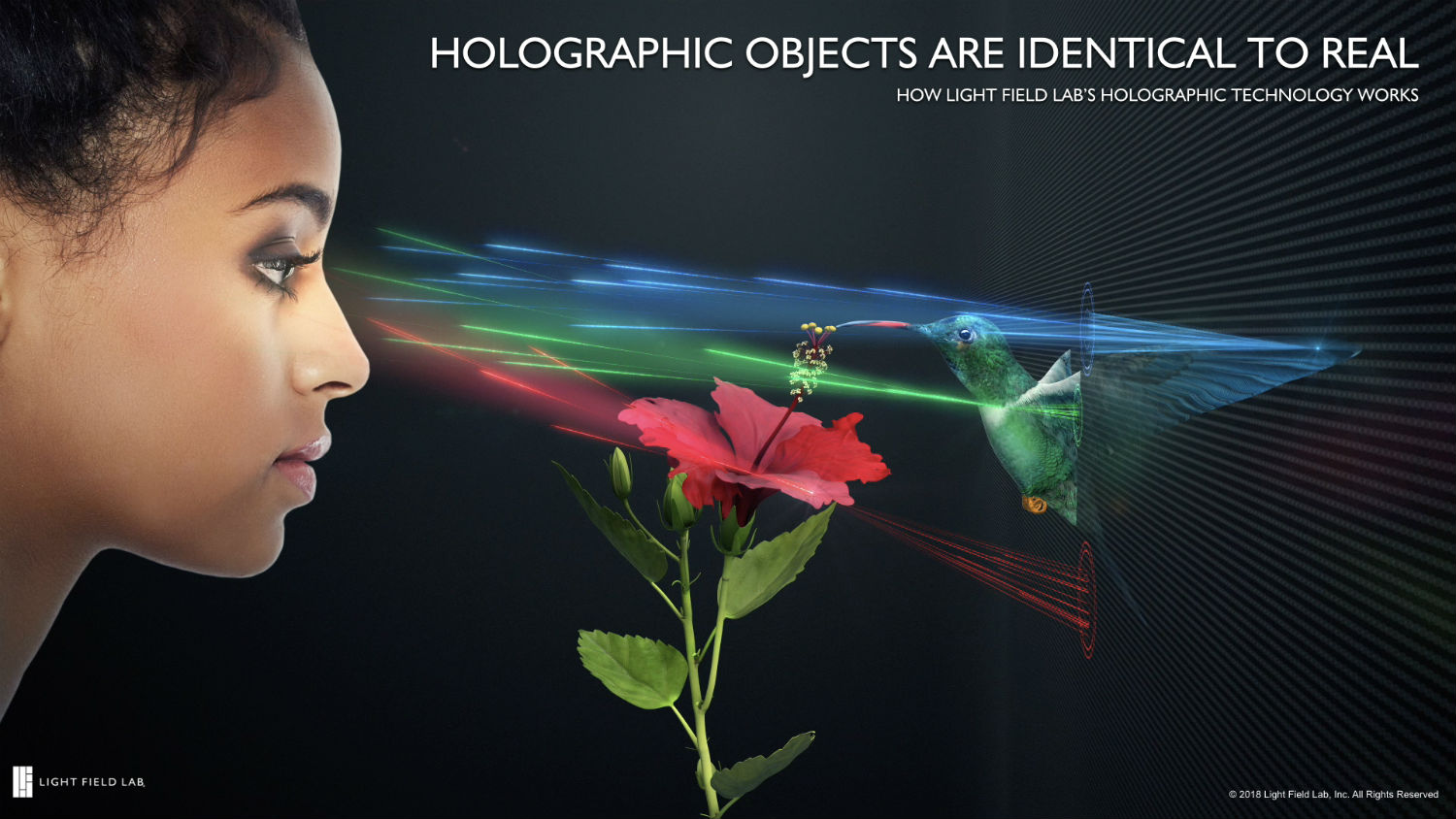
Next Steps
I noted deficiencies in the visuals of the display only outside the optimal viewing cone provided by the small display. Everything inside that cone — at least a meter away — looked great. I should note they also showed a moving fish that was less detailed than the butterfly, and as certain pieces of it moved closer to me I noted a bit of fuzzy softness there.
“The amount of movement depends on how close you are to the hologram, the size of the holographic surface, and the optical prescription for the holographic waveguides,” Karafin explained.
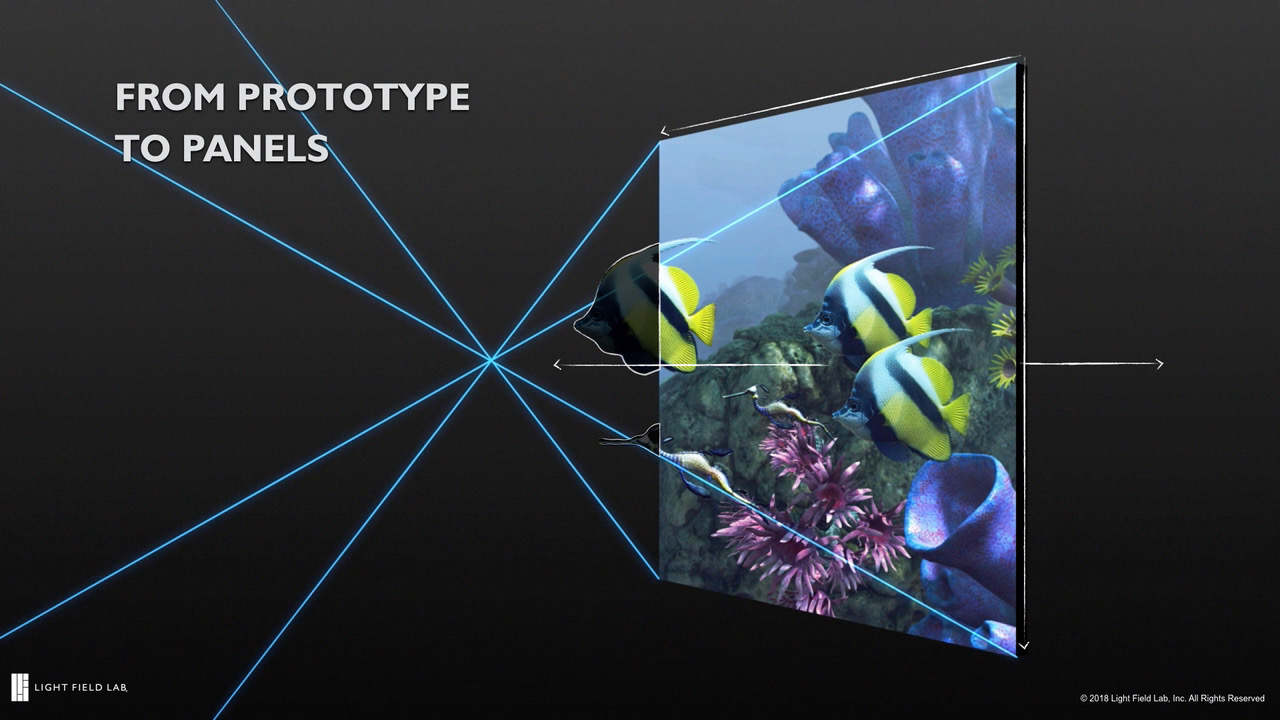
I left the room and realized I should have asked to see the demo with the lights on. Light Field Lab representatives were crystal clear in saying that I would see something small float believably in front of me with no glasses, goggles or head tracking of any kind. But they also have a lot to prove with so many other volumetric display technologies promising things which can’t be delivered. Many competing ideas for Light Field Lab are low resolution when viewed up close, like Looking Glass. That’s why Karafin showed me up close how lenses affect his holograms.
“The holographic volume is two inches, but that’s only limited by the submodule prototype,” Karafin said. “That grows substantially in product.”
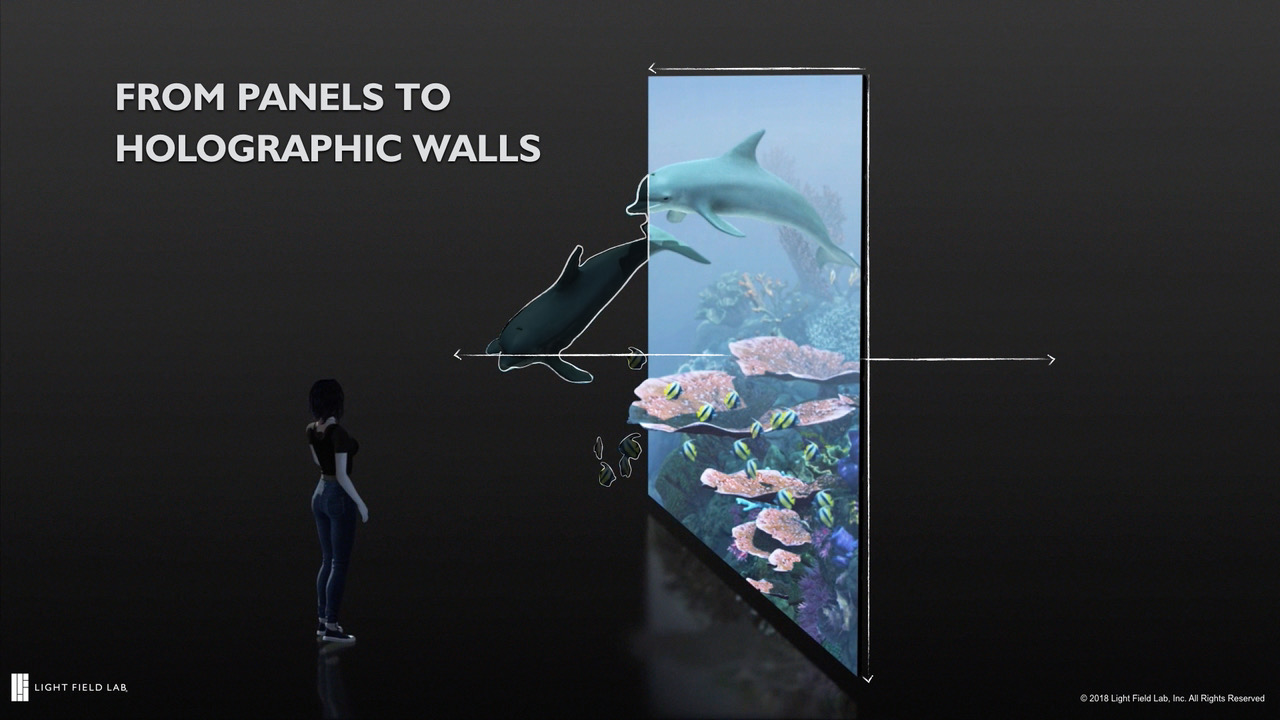
LFL representatives believe the first use cases for this tech will be for location-based entertainment and education, like theaters, museums or theme park attractions. I didn’t expect the lights-on demo to be impressive and it wasn’t, but it did give me a good look at the overall rig. Photographs weren’t allowed, but the panel looks a lot like it does in the image at the top of this post except that it is mounted on a tall server rack.
Bricks In A Wall
The word “brick” is useful here because that’s how I’d describe the box from which light emerges.
Karafin and crew believe they’ve uncovered a “recipe” for producing proper light fields from one side of this brick. My demo — reminiscent in some ways of my first Oculus Rift demo back when the company just had seed funding in late 2012 — was about showing me a proper light field display and proving it to me that it is real. Light Field Lab accomplished that. The next phase for the company is about expanding the size of the area where the full holographic effect can be viewed by stacking them up like bricks in a wall. That also means the tower portion of the installation needs to go away.
“We already do everything within the prototype that we will do to manufacturer the product,” Karafin said.
So next year my expectations for Light Field Lab is to see the same demo with a friend able to stand side by side with me. I want to observe a couple live butterflies with the same visual acuity as 2018 but with only wires running to a couple of these bricks with the computer towers in a separate area.
Karafin says that’s the plan. Light Field Lab is also working with rendering company OTOY to build out a content development pipeline for the technology.
“You will be able to move octane light field objects interactively on the display in a month once we hook up our custom build of our viewer to the panel,” OTOY CEO Jules Urbach said. “Been waiting to get multiple RTX 6000 before going up to LFL to finish this work.”
Last year Karafin said they would use their first funding to deliver a proof-of concept hardware prototype. Earlier this year they announced $7 million in funding to complete it. This week I looked at it. If some portion of $7 million is what it took to produce what I saw, then I need to see what Light Field Lab does with more money and another year to build a much bigger device.
Karafin showed slides before the demo depicting various possible configurations.A holographic table so you can have something like Holochess from Star Wars, or a holographic theater where a shark seems to come out into the audience like Jaws in Back To The Future Part II. Or perhaps one day many years from now a fully holographic room — a holodeck — where redirected walking techniques and haptic effects might be used to simulate touch in a seemingly endless space. Karafin’s slides also include explanations of why most of these holographic pop culture reference points — including R2-D2 projecting Leia into the open air — probably can’t work in the real world. As Karafin explains, you need a surface behind the holographic volume “spraying” out light which enters the eye as naturally as if it had bounced off a real object.
Any doubt I have (and I don’t have too much of it now) the company can deliver this ground-breaking display technology to locations like theme parks will evaporate whenever they announce more funding and I see Light Field Lab successfully stack these units together.
Now Boarding: Hype Train To The Holodeck
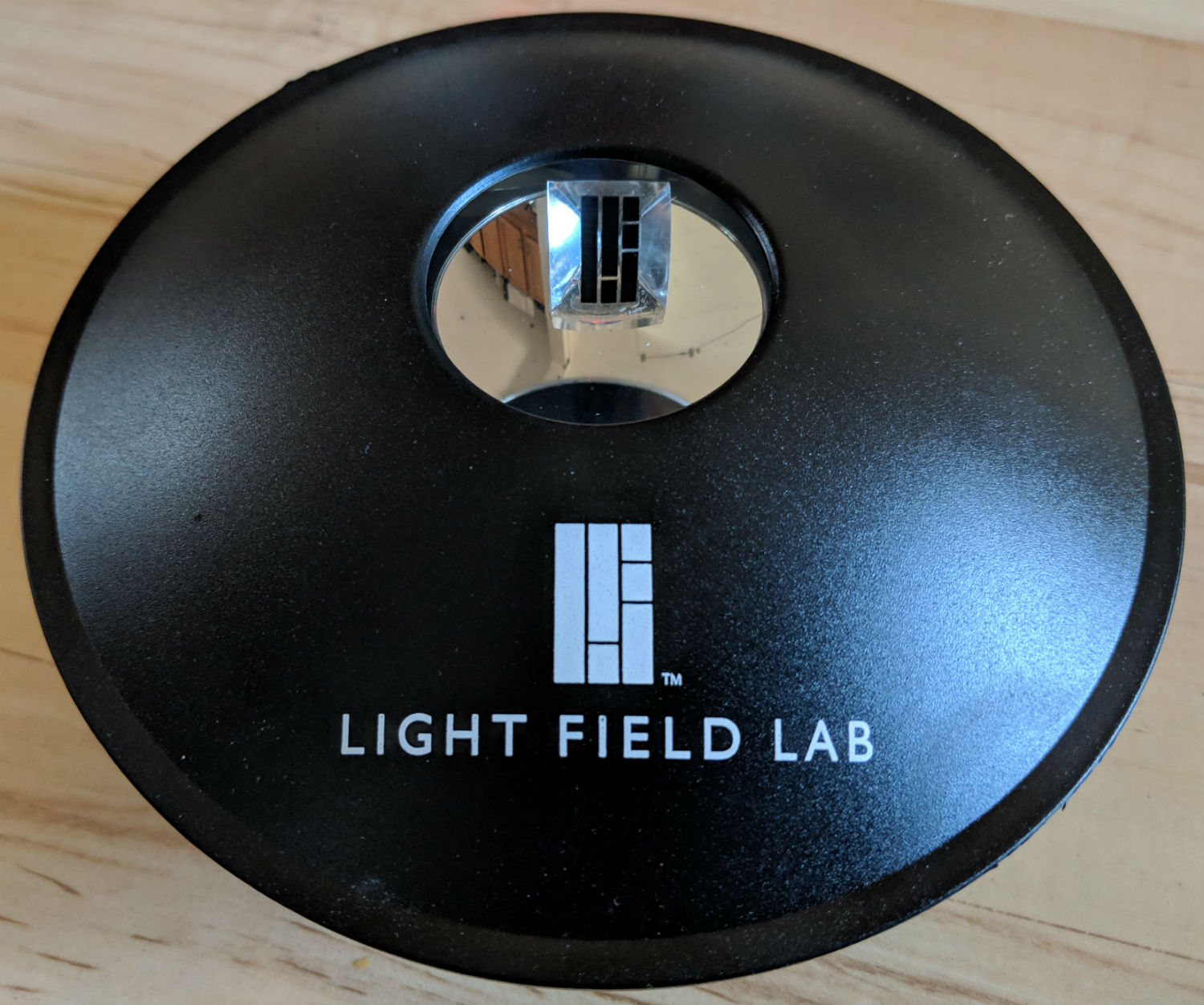
I’m handed a bag at the end of my meeting with a cheap plastic toy inside that was made in China. It is called a mirascope. Karafin says it is the analog equivalent of what they are doing with each point of light from their display.
“The mirascope is a dual parabolic reflector that forms a relayed real image from a real object. The real image you see results from the convergence of ray bundles, identical to how our system collimates and converges energy to form the hologram,” Karafin said. “Essentially, the mirascope illustrates how a real image is formed — but we replace the real object and mirascope with a completely solid state, holographic, digital projection backplane.”
I brought their little toy home and it completely blew my family away to try and grab the gem and discover it really isn’t there (it is at the bottom of the mirascope). The toy taught my household both the Light Field Lab name and its promise of true glasses-free virtual worlds not too far off from the Holodeck.
Next time I make that trip to see Light Field Lab, I’m bringing my family.
“Our vision is to enable the Holodeck, which makes the depictions of holographic interfaces in science fiction a reality,” Karafin said.

